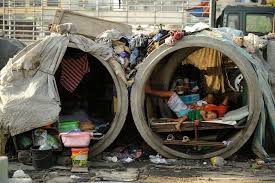By Richard Jones
Manila, Philippines — The Philippine Statistics Authority (PSA) recently released its official poverty statistics for the year 2023, shedding light on the economic well-being of Filipino families across different regions. Here are the key findings:
Poverty Threshold and Incidence
- Poverty Threshold: To understand poverty, we first need to define the threshold—the income level required for a family to meet their basic food and non-food needs. In 2023, a family of five needed at least PhP 13,873 per month to reach this threshold.
- National Poverty Incidence: Nationally, the poverty incidence among families was recorded at 10.9 percent. This means that approximately 2.99 million Filipino families did not have enough income to cover their essential needs.
Regional Disparities
Now, let’s zoom in on specific regions:
- National Capital Region (NCR):
- Poverty Incidence: NCR, which includes Metro Manila, remained the least poor among all regions. Only 1.1 percent of families in NCR fell below the poverty line in 2023.
- Poverty Threshold: However, it’s worth noting that NCR had a higher poverty threshold compared to other regions, standing at PhP 15,713. This reflects the relatively higher cost of living in the capital.
- Zamboanga Peninsula (Region IX):
- Poverty Incidence: In stark contrast, Region IX (Zamboanga Peninsula) faced significant challenges. A staggering 24.2 percent of families in this region lived below the poverty line. That’s nearly one in every four households struggling to make ends meet.
- Context: The Zamboanga Peninsula, known for its picturesque landscapes and vibrant culture, grapples with economic disparities that demand attention and targeted interventions.
- Other Regions:
- BARMM (Bangsamoro Autonomous Region in Muslim Mindanao): Following closely behind Zamboanga Peninsula, BARMM reported a poverty incidence of 23.5 percent.
- NIR (Negros Island Region): NIR, which was established in recent years, had a poverty incidence of 22.6 percent.
Positive Trends
- Caraga: Among the 18 regions, Caraga showed remarkable progress. Its poverty incidence decreased from 25.9 percent in 2021 to 14.9 percent in 2023—a significant improvement.
- Other Regions: While some regions exhibited downtrends in poverty incidence, these changes were not statistically significant. Meanwhile, MIMAROPA, NIR, and Zamboanga Peninsula saw slight increases, with only NIR showing a statistically significant rise.
The Road Ahead
Addressing regional disparities requires a multifaceted approach—investment in education, healthcare, infrastructure, and sustainable livelihoods. As we move forward, let’s work collectively to uplift all Filipino families, ensuring that no one is left behind.




